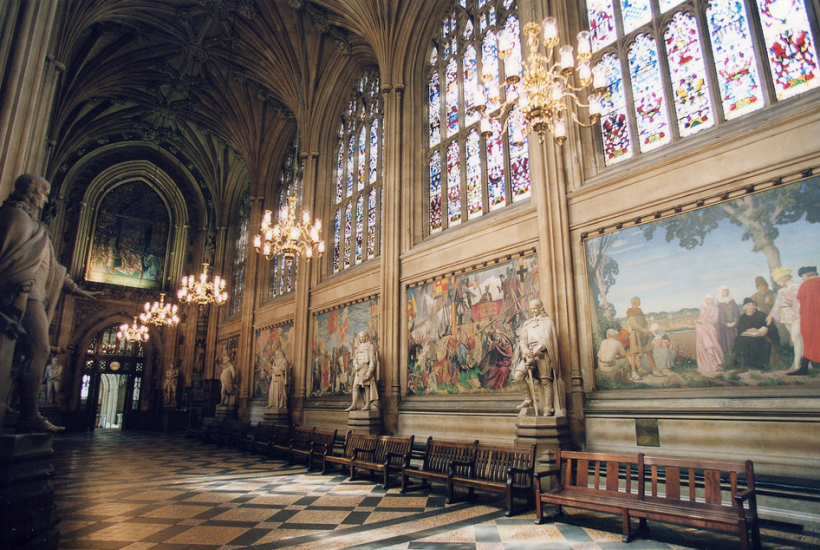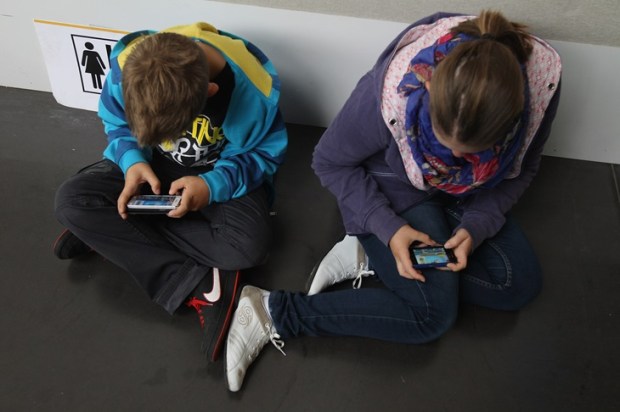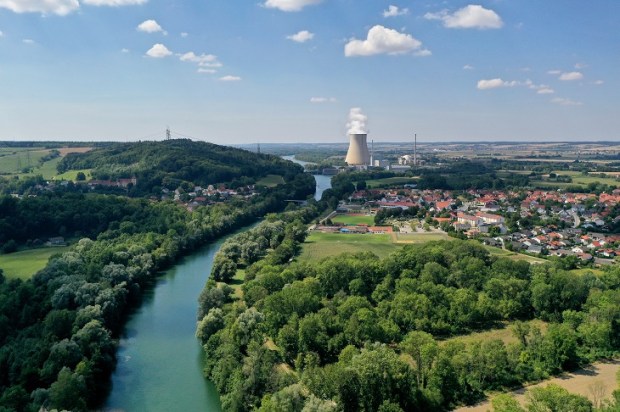Over at Breitbart’s London Bureau, there’s a roughish, floppy-haired giant of a fogey named Oliver J.J. Lane. Red-pants’d and boater-hat’d, Oliver could’ve easily been chairman of the committee of the Drones Club had he not chosen a career in journalism. He’s the kind of chap you look at once and know that, if he told you he’d discovered a fantastic little pub in the scummy part of Birmingham (but I repeat myself), you’d drop whatever you were doing and go find it.
Breitbart fans might not know his name, but they’d know his work. Hell, even if you’re not a Breitbart fan, you’d know his work. He’s broken more stories about Europe’s migrant crisis than probably any other English-language reporter. That’s not to mention his coverage of the sundry terror attacks, and the goings-on with the Continental populist movements.
As such, Oliver’s been covering the Dutch election (which was a bummer), but recently published a superb piece on the planned ‘renovations’ to Westminster’s art scene:
The Speaker’s Advisory Committee on Works of Art has noted with distaste that just four of the 310 portraits in Parliament’s collection depict ‘black and ethnic minority’ figures, an oversight that must now be rectified.
Naturally. The push is being led by Labour MP Alison McGovern, who says:
The art on the walls of the Houses of Parliament reflects the values and interests of the Victorians who commissioned it, and it tells a particular story about British history before the twentieth century.
Unsurprisingly, it has long been noted that these artworks do not reflect either the modern or historic diversity of the UK’s population.
The Works of Art Committee is committed to rectifying this by increasing, over time, the representation of women and ethnic minorities.
Oliver’s reply is on the money. Here are the best bits.
The art and architecture of the Palace are not mere accidents of aesthetic taste that come and go with fashions, and cannot just be swept away to suit today’s zeitgeist for inclusivity.
Above all, the Palace of Westminster is a remarkable piece of Christian public architecture… Rather than referencing the Pagan origins of democracy in ancient Greece, Britain’s parliament remembers through the neo-gothic style Christian medieval Europe and the architecture of 13th century England. It is a cathedral, rather than temple, to law, order, and constitutional monarchy…
Attempts to alter that reality — either through art replacement and even calls to abandon the present building rather than see it repaired — may be little more than crude vandalism.
All true. I’d just add one thing. Lane writes that:
Left well alone, the balance would in time shift without encouragement. Long-standing rules that portraits should not be hung of members until ten years after their deaths, which have now given way to new standards which allow for hanging ten years after their leaving Parliament even if they are still alive, means more pictures of the many minority members who now sit will appear gradually through time.
So the faces will change organically. But I hope the style changes organically, too.
You know what I mean. The whole shit vs. not-shit art thing.
What really gets my goat about shit art is that it’s not necessary even by its own terms. Its apologists always say that art must be pornographic, or nihilistic, or blasphemous because the old stuff is stale and repetitive. It’s very difficult to believe anyone with an internet connection could seriously believe that.
Look at the Mannerists, who were eerier and more subversive than any of the scribblers who’ve died of hepatitis in a Parisian attic. The rounded, elongated features and total lack of proportion are nightmarish, yet they retain the classical devotion to form and beauty.
Or William Blake, the nearest thing to Goya Britain ever managed to produce. His paintings are, like his poems, truly visionary attempts (and failures) to reconcile the horrors of early industrialism with an Edenic spiritual innocence. They’re glimpses of something, not fearful, but unimaginable. They’re glimpses of scenes and beings that one feels are very much real, but that we as a race aren’t quite prepared to see. Blake saw angels and demons that move about us all the time, mercifully hidden behind the rude pall of reality.
Or his disciples, the Ancients, for that matter. They, too, have the quality of a nightmare – but one you reckon you’d actually enjoy having. They lived in a perpetual Halloween: in forests and towers and fields inhabited by listless ghosts and mortals who’ve grown much too accustomed to their presence. Their etchings capture that now-perished world of our primeval ancestors, where every wood had its own god and unexplained deaths could be chalked up to an ill-tempered moon.
Then, of course, there are the Pre-Raphaelites, who are really beyond description. The nearest one could come would be to say that everything’s just a bit too real. It’s like their imagination worked at 48 FPS: the skin strains on the bone, the blush erupts from the skin, and hair curls just a bit too tightly. Yet, when you look closely, the attention to detail is almost pathetically lax. It’s as though every single bristle on their paintbrush worked independently, and the whole thing was achieved in a single, lazy stroke.
How miserably sad that so many Westerners are dead to this incredible diversity in our own artistic heritage. We’re so overexposed to world cultures in their tedious variety that we can only see our own as a featureless lump. We have so many artistic traditions at our fingertips that we can’t possibly delve into a single one of them in any real depth, so we just skim them all.
No wonder modern art is just a mess of splattered paint and meaningless shapes. With our perilously short attention span, that’s all we can really discern in the great masters anyway.
It’s the same thing that’s happened to religion. There was a time when our societies were so steeped in the Christian faith that we could truly marvel at foreign practices, either with reverential awe (as with the poetry of Hallaj) or with a terrifying familiarity (like sati). Now, with our urinal-deep impressions of every obscure sect on the planet, little wonder so many shrug their shoulders and declare, ‘It’s all the same pie-sky nonsense.’ That’s demonstrably false. Yet how would we know otherwise?
Which is perhaps the best argument for monoculturalism. Multiculturalism is, in practice, no culture at all – just crude caricatures of ancient peoples, slopped together by government-appointed festival-planning committees.
Westminster Palace is today one of the few places one can go and experience Western (and its Anglo variety in particular) art in any great depth. One can become immersed in generations’ worth of creative geniuses, experiencing on an aesthetic level the most impressive people to ever walk the earth. Let’s hope it stays that way.
Got something to add? Join the discussion and comment below.
Got something to add? Join the discussion and comment below.
Get 10 issues for just $10
Subscribe to The Spectator Australia today for the next 10 magazine issues, plus full online access, for just $10.


























Comments
Don't miss out
Join the conversation with other Spectator Australia readers. Subscribe to leave a comment.
SUBSCRIBEAlready a subscriber? Log in